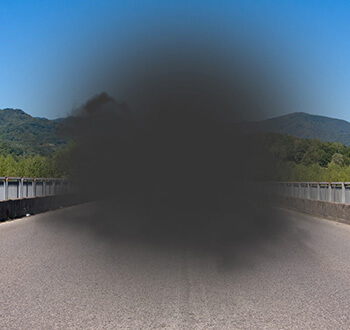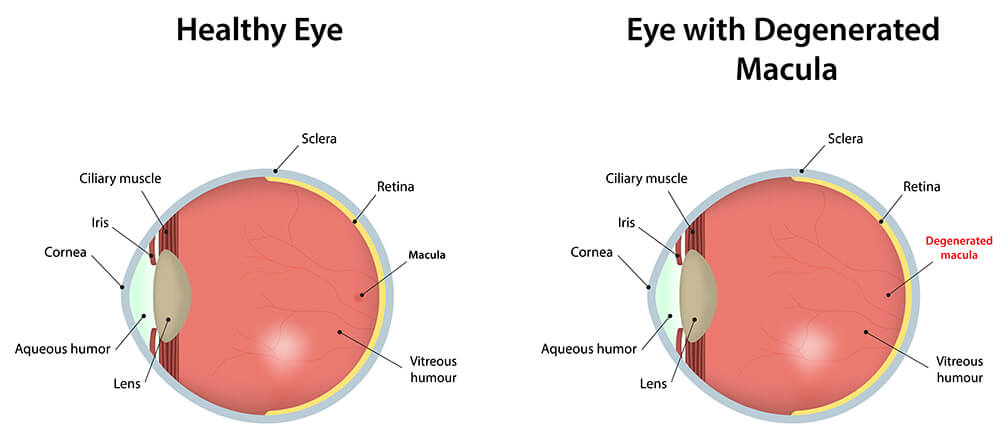
Age related macular degeneration (AMD) is one of the most common causes of poor vision after age 60. AMD is a deterioration or breakdown of the macula. The macula is a small area at the center of the retina in the back of the eye that allows us to see fine details clearly and perform activities such as reading and driving.
The visual symptoms of AMD involve loss of central vision. While peripheral (side) vision is unaffected, one loses the sharp, straight-ahead vision necessary for driving, reading, recognizing faces, and looking at detail.
Although the specific cause is unknown, AMD seems to be part of aging. While age is the most significant risk factor for developing AMD, heredity, blue eyes, high blood pressure, cardiovascular disease, and smoking have also been identified as risk factors. AMD accounts for 90 percent of new legal blindness in the US.
Nine out of ten people who have AMD have the dry form (called atrophic), which results in thinning of the macula. Dry AMD takes many years to develop. Currently there is no treatment for this form of AMD.

The wet form of AMD (called exudative) is less common (occurring in one out of 10 people with AMD), but is more serious. In the wet form of AMD, abnormal blood vessels may grow in a layer beneath the retina, leaking fluid and blood and creating distortion or a large blind spot in the center of your vision. These abnormal blood vessels are now treated injections of medicine into the eye. These injections are easy to perform in the office under topical anesthesia and are generally painless. The medications block a signal pathway for the abnormal blood vessels called VEGF (vascular endothelial growth factor). Once this signal is blocked, the vessels and swelling usually regress. The most common injections are Avastin, Lucentis and Eylea.
Promising AMD research is being done on many fronts. In the meantime, high-intensity reading lamps, magnifiers and other low-vision aids help people with AMD make the most of their remaining vision.
